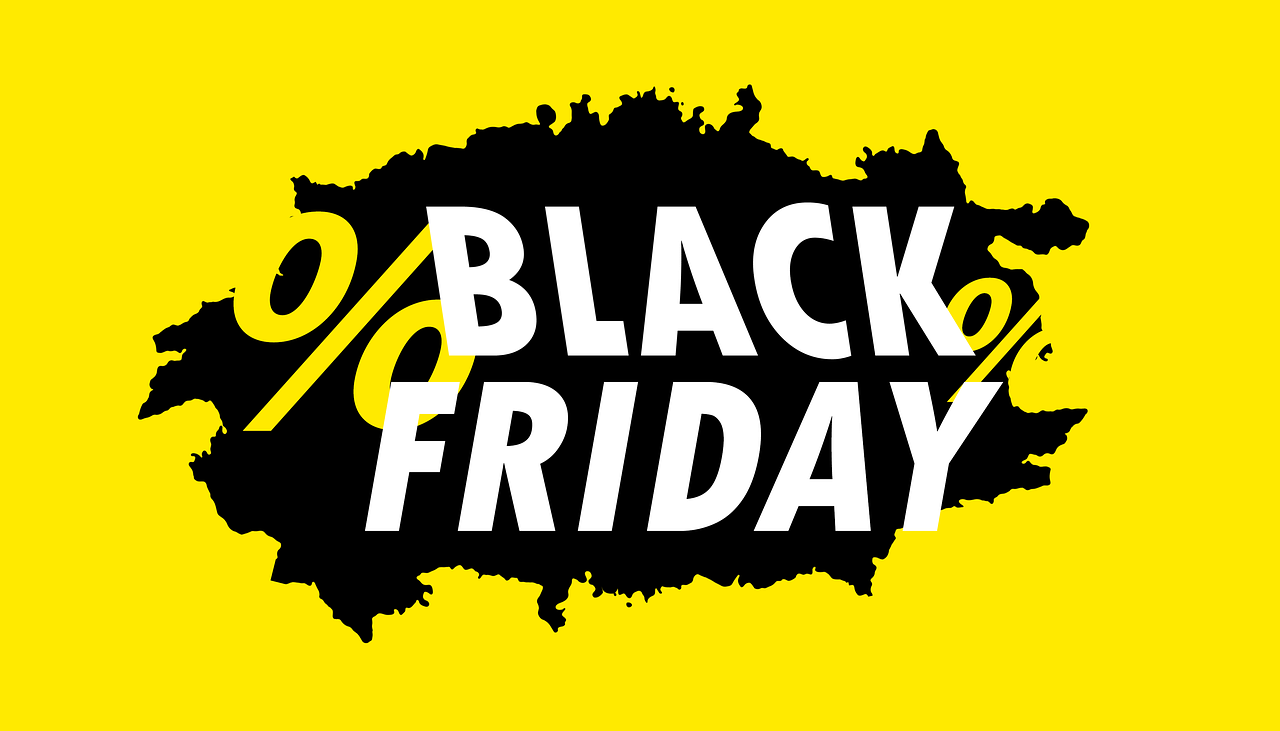Share This Article
Do you want to creat an online shop from scratch? Here at BigBuy we know a couple of things about ecommerce! Find them out in this ‘mega-guide’.
Setting up your own online shop from scratch is definitely a challenge, but more and more people are deciding to sell over the net. In the second half of 2016, the National Commission of Markets and Competition (NCMC) registered a 20.3% increase in online transactions , compared to the same period of the year before.
If we convert this percentage to euros, we would be talking about almost 6 billion spent online. The trend shows no signs of falling in the near future, and more and more people want to learn how to create an ecommerce website step by step.
As a dropshipping supplier, at BigBuy we work with hundreds of customers who have their own ecommerces, and we know their needs and the problems they encounter every day. In order to support them in all the tasks related to an ecommerce, we’ve prepared this guide, in which we cover the main doubts that may arise in your daily life when you set off creating your own ecommerce website. Here we go!
Creating your ecommerce website step by step
STEP 1: Define your business model
Many people who decide to create an online store skip this step, but we’ve included it because it’s what really should be done. If you really want to make a profit and take your ecommerce seriously, the first thing you should do is define your business model. Don’t know how to do so? Don’t worry. Defining your business model can be as simple as making a Canvas. A Canvas is a single page indicating the main information on how your ecommerce will work, to give you a guide and tell you the first actions to carry out. The question is, what kind of business models can work in an ecommerce? Although more and more are becoming available due to the digital revolution, we have identified the 3 main ones:
- B2C (Business To Consumer): This is the most widespread model, in which you sell to the final consumer. ‘Asos’, ‘Media Markt’ or ‘El Corte Inglés’ deal with purely B2C ecommerces. Almost all the literature you find on ecommerce and online marketing is usually focused on this type of model.
- B2B (Business To Business): A B2B online store is one that sells to other companies. BigBuy, for example, is a B2B. We sell wholesale and look for customers who want, in turn, to sell to their own customers.
- C2C (Consumer to Consumer): The C2C model was practically non-existent until the Internet came on to the scene. This business model, also called P2P (“Peer To Peer”), can be found in companies such as Airbnb or BlaBlaCar, which put individuals in contact with each other and usually charge a commission for each transaction.
What kind of business will your ecommerce be? Whether you sell products or services, you can be either a B2C or a B2B (or even both) or simply get clients communicating with each other and be a C2C.
At this stage you’ll have to establish several things but the most important thing is where your income is going to come from. You’ll have to see what expenses your shop is going to have, how much you plan to sell, and when you should reach the desired ‘break even’ (that moment in which, at last, a company stops making losses and starts making a profit) .
Sell online without stock
When someone decides to create an online shop, and analyses the expenses and income of their ecommerce, there is a problem that usually arises – what should I do with the stock? There isn’t a problem if you sell services but if your ecommerce is dedicated to selling items of any kind, one aspect to take into account is your provisioning, storage and, of course, shipping. If this aspect gives you more headaches than anything else, we recommend that you find out more about dropshipping. This distribution model basically consists of the idea that when a customer buys something in your shop, you don’t deal with the shipment, the wholesaler does. This, in a nutshell, saves you the stock management and allows you to dedicate yourself to selling. Anyway, in the article below we’ve explained it much better.
- Post #1 to read: What’s dropshipping and how does it work?
This phase involves many tasks and we wouldn’t be able to delve into all of them: finding a viable market niche, become freelance (or not)… We will take a look into them in future articles. Meanwhile, we’ll continue with one of the most entertaining parts of putting a new ecommerce together: its creation.
STEP 2: Creating your online shop
Let’s say that we already have the basic tasks under control before setting up our ecommerce website we’ve done a market study (which doesn’t have to go any further than a few deep searches on Google), we have become self-employed (or we have found an alternative), we have looked for a wholesaler to acquire our stock… If all of this (and a couple more things) is ready, we can get to work on creating our online store.
This phase of the article will be oriented mainly towards those people who are going to create their ecommerce from scratch, and who aren’t subcontracted by another company. However, if the technical part isn’t your thing and what you want is to start selling as soon as possible, you can turn to a web design company who specialise in ecommerce. If, in addition, you want your business to be dropshipping, there are suppliers like BigBuy that offer you a dropshipping shop already fully configured and synchronised with the wholesaler’s catalogue.
First steps: Contract a hosting, a domain and choose a CMS
The technical part of building an ecommerce doesn’t have to be too hard. As with any web, the first thing to do is to contract a hosting and a domain (that is, the space in which your ecommerce will be hosted and the name you are going to give it). Once you have this, you should choose the content manager system (CMS) that best suits your business.
If CMSs are not your thing, you can always develop a personalised web, but it’s a much more arduous job and to do so you must have a lot of advanced programming knowledge. A custom web isn’t usually recommended unless you’re going to build a very specific type of shop, where you need custom processes that a CMS doesn’t offer. From our point of view, these situations are very rare and a predesigned template is going to be much cheaper and will allow you to have your website much quicker. There are many ecommerce CMS that are useful, but each of them is best suited to a particular type of shop. Let’s look briefly at some of the most important ones:
- WooCommerce: It’s not a CMS itself, but a plugin for WordPress. It’s very usable and allows you to set up simple but effective online shops.
- Shopify: The software is very simple to use and it doesn’t require having great knowledge of computer science or programming. In addition, there are a lot of templates available, which adapt to all types of shops.
- PrestaShop: Without a doubt, it’s the best-known CMS for ecommerce. It’s one of the most complete and allows you to set up medium-sized shops. Developers from all over the world have created plugins and templates for PrestaShop.
- Magento: It’s the most used CMS for ecommerces with lots of references and traffic. Its usability is not the best, and we only recommend it if you expect to have a considerable volume of traffic and sales.
Once you have chosen your CMS and you have found a template that you like, you’ll still have to modify the design a little, configure payment methods, contact forms … Down below are a couple of articles that may be useful to you.
- I need a logo for my website! 5 design platforms to find it
- Everything you need to know about payment methods for ecommerce
Don’t forget SEO
An essential part of creating your online shop is that it’s ready to be correctly positioned in Google. Today, CMS and its templates are usually designed to enhance positioning, but there are certain tasks that you must carry out yourself.
The SEO, as you’ll know (or as you’ll soon discover) has both an on-site and an off-site side.
- The on-site part is related to the operation of your website, its structure and content (so you can dedicate yourself to optimising it in the first few days of your ecommerce website).
- The off-site part is more related to the traffic you bring to your website: its quality, where it comes from, how many people recommend you … The off-site has more to do with how you broadcast your website and maybe we should leave this until Phase 3, but so we don’t complicate things, below you can find a great selection of posts focused on SEO.
Posts about SEO you should read
- Introduction to SEO On Page: keys to optimising an ecommerce
- What are a website’s SEO tags? Learn the key points
- The importance of keyword research in a SEO strategy
- The 4 best tools for analysing and searching for keywords
- Explaining the difference between main keywords and longtail keywords
- Anchor text: What is it and why is it important for SEO
- Everything about guest posting to promote an ecommerce
- Factors to take into account when creating SEO content for an ecommerce
- How to design my online store’s internal link structure
- Link types and metrics to keep in mind when linkbuilding
- Tips to optimise off-site linkbuilding for your e-commerce site
STEP 3: Make your ecommerce known
Once your ecommerce is set up and ready to sell, it’s time to make it known. This phase is key in any ecommerce, and many blogs and courses on digital marketing are mainly focused on helping you boost your business’s broadcast channels. It wouldn’t make sense to create an online shop if no one ever enters it.
Evidently one thing is clear: if your ecommerce doesn’t receive any traffic, there won’t be any sales. So now you can promote yourself in the search networks, in social media, in the media or wherever your customers are. This phase of managing an ecommerce is such a “backbone” that the bulk of our blog is focused on helping you as much as possible with it. We have more than 20 articles oriented to support you on this subject, which you can see below, which we’ve sorted by categories:
Campaigns on Google AdWords & Google Shopping
Google’s search and display network, as well as Google Shopping, have become essential tools for ecommerce (often ahead of social networks). If you configure well and prepare good ads, your results can be outstanding.
However, there is one aspect to keep in mind that we can’t push aside: this type of advertising must always be paid for because as soon as we stop investing in it, our ads will disappear off of the map. In this sense, it’s important to develop an SEO strategy in parallel with the investment in Google campaigns. If we succeed in positioning ourselves correctly on Google, our ranking won’t depend on whether we’re paying or not. Instead, with Google campaigns we are required to constantly invest if we want to appear. It’s not a question of choosing one thing or another, but of knowing how to balance them.
Let’s not leave it there. If you want to know more about AdWords and Shopping, we have a selection of articles that you might be interested in:
About campaigns in AdWords: Search network and display network
- Adwords (Part I)
- How to configure Adwords. Tips to remember | Adwords Guide II
- Adwords Glossary. Nomenclature and basic concepts to master | Adwords Guide III
- Discovering Google Adwords Search Campaigns | Adwords Guide IV
- Keys to launching a Display Campaign for your Dropshipping store | Adwords Guide V
- Adwords Remarketing Campaigns: What they are and how to take advantage of them | AdWords Guide VI
- Adword Campaigns for mobiles. Types and recommendations | Adwords Guide VII
- How to create video marketing campaigns through Google AdWords | Adwords Guide VIII
About Google Shopping
- What is Google Shopping? Starting selling with our guide
- Learn to optimise your ecommerce and start selling on Google Shopping
- How to choose and optimise the items on your Google Shopping feed
- Tricks to differentiate your Google Shopping campaigns from the competition
Launching ourselves on social networks
Filtering deeper and deeper into the society, social networks are becoming part of our day to day lives and have become advanced advertising tools for companies. Depending on the sector of your e-commerce and the type of client you are targeting, it’ll be more appropriate to be in one network or another. If you sell women’s shoes for example, Instagram will be very suitable. On the other hand, LinkedIn wouldn’t be useful at all (unless you’re looking to hire people for your team!).
On more than one occasion in this blog we’ve talked about how to get the most out of different social networks, and how to get make your e-commerce known to as many people as possible. In social media, it’s important to bear in mind that having new followers shouldn’t be a sole objective. Being on social networking implies improving your company’s branding (if your company goes from having 100 followers to 10,000 on Facebook, its brand recognition is obviously reinforced). However, this improvement is useless if the sales achieved through Facebook don’t increase proportionally. In the end, social networks are a sales tool, just like a websites. It is worthless if we fail to convert our efforts into benefits.
Keep reading about social media por ecommerces
- How to use social media for your online business
- 4 Social Media tools which will make your life easier
- Advertising on Facebook: How to get started
- How to use Facebook Ads targeting and succeed
- 5 tips for designing successful Facebook Ads
- Tips for creating and optimising your online Facebook Store.
- Advertising on Twitter. Basic guide for creating a Twitter Ads campaign
- Twitter for companies: all the keys to boost your ecommerce
- Advertising on Pinterest: a basic guide to creating a Pinterest ads campaign
- How to position products and do SEO with Pinterest
- Pinterest for businesses: how to make the most of what it offers
- Instagram for businesses, the most visual network for your ecommerce
- What is influencer marketing and how can it help me?
E-mail marketing: A tool that has constant usage
Whether your busy inbox likes it or not, email marketing still works as a sales tool. Even more so in e-commerce. It allows us to keep our customers (and potential customers) aware of our product news, our offers and anything else we can think of.
Even though more and more companies are using it, hardly any of them take advantage of the fact that it can be personalised. So that our customers don’t get bored and unsubscribe, it’s important to personalise our emails and adapt them as best we can to what they’re looking for. Segmentation is key in online marketing, and especially in email campaigns.
Some more posts about email marketing for ecommerce
- Email marketing for e-commerce, a key tool for online marketing
- How to design an email marketing strategy for effective e-commerce
- The best tips to reach my customer’s email inbox
- How to design an email marketing strategy for effective e-commerce
- 6 common errors that we should avoid with email marketing
- How to configure and analyse campaigns in MailChimp
STEP 4: Calculate, analyse & make changes
One of the golden rules which you should repeat over and over again in digital marketing is the obligation to size up everything that’s done. The days when companies made huge investments in TV and radio campaigns where it was difficult to calculate its return are gone. Now, everything is quantifiable and the ROI is within arms’ length.
When you create an online shop, analytics are connected to every aspect of your campaigns, but it’s likely that the most important information is the one you get from your website. The quintessential tool in web analytics is Google Analytics: The technology giant offers a free program, which allows you to control everything that happens on your website.
No prized e-commerce should overlook the importance of measuring what your users are doing. Here you can find 5 posts with which you can start updating Analytics.
Keep reading about web analytics
- What is Analytics and how could it help my e-commerce store?
- The importance of setting up e-commerce in Analytics
- How to configure Google Analytics in 6 steps
- Google Analytics dashboards: How to install them + 5 essentials
- Ecommerce KPIs: The Key Performance Indicators of your Online Store
STEP 5: Always keep up to date
Although we have left it to last, having an e-commerce means it must always be up to date. For this reason, this last step should really be transversal to all of the others. When you create an online shop, you start to depend on the latest demands of the market, which is advancing at full speed. It’s important not to be left behind.
To do so, you can subscribe to our blog, follow us on Twitter and find other publications that talk about the latest trends in e-commerce and digital marketing. Take the risk and try new possibilities and launch simple campaigns to be able to discover new ways to reach your customers and to get to known and, of course, to sell more.





 Contact
Contact





